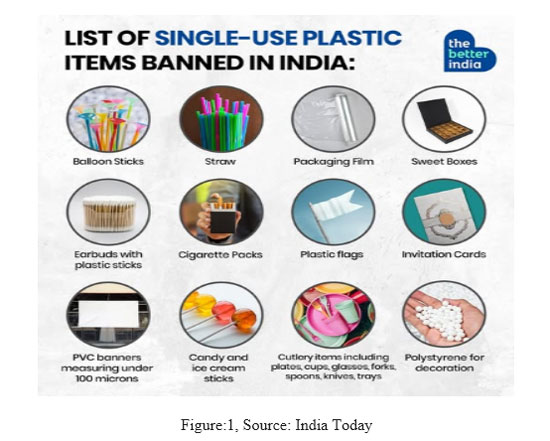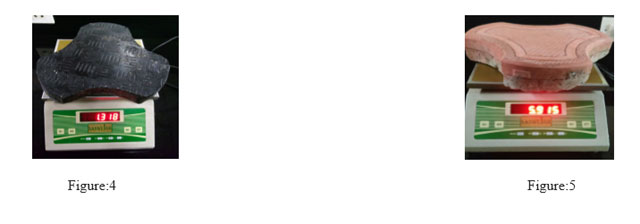September 1, 2025
Innovative recycling and community action can turn a problem into opportunity
The world today is drowning in plastic waste. As per Earth Action, Switzerland (2024), nearly 220 million tonnes (MT) of plastic waste are generated globally every year. India is also witnessing a sharp rise in generation of plastic waste. While the Ministry of Environment reported 3.7 MT of plastic waste in 2020–21, the latest estimates show this figure has jumped to 9.3 MT annually.
To address this, the Government of India imposed a ban on single-use plastics from July 1, 2022. Single-use plastics are items designed for one-time use before disposal such as carry bags, straws, cutlery, stirrers, polystyrene plates, and thin packaging films shown in figure 1. Despite the ban, however, these items are still widely used, especially by local shops and street vendors, pointing to gaps in enforcement and public awareness.

Plastic waste management is further complicated by the fact that plastics come in different types, identified by resin numbers (1 to 7) as shown the figure 2. For example, a PET water bottle is marked with the number 1 inside the recycling triangle as shown the figure 3. These codes are meant to aid recycling, but most consumers are unaware of their meaning, resulting in poor segregation at the source.

Recognizing these challenges, I undertook a Government of India, Department of Science & Technology funded project under waste management category that explored innovative recycling pathways. My team successfully developed lightweight yet stronger paver blocks using LDPE waste, multilayer plastics, and industrial residues. Figure 4 and figure 5 shows recycled plastic composite paver block and concrete paver block respectively in which recycled plastic composite paver block is 4 times lighter and 3 times stronger when compared with that of concrete paver block for the same size.

Compared with conventional concrete blocks, these recycled plastic blocks are light in weight, easier to handle, more durable, and represent a step toward sustainable construction materials. My further research will focus on translating the laboratory tested product to next stage by assessing its durability and feasibility in real world environment and progressing towards large scale commercialization.
What Citizens Can Do
- Say No to Single-Use Plastics – Carry reusable cloth bags, bottles, and cutlery.
- Segregate Waste at Source – Learn resin codes (1–7) and separate recyclable plastics from mixed waste.
- Support Sustainable Products – Choose eco-friendly or recycled alternatives whenever available.
Plastic waste is one of the defining environmental issues of our generation. While bans and policies provide direction, the real change will come through innovation, responsible usage, and active citizen participation. With science-driven solutions and community effort, India can transform plastic waste into valuable resources and lead the way towards a circular economy.